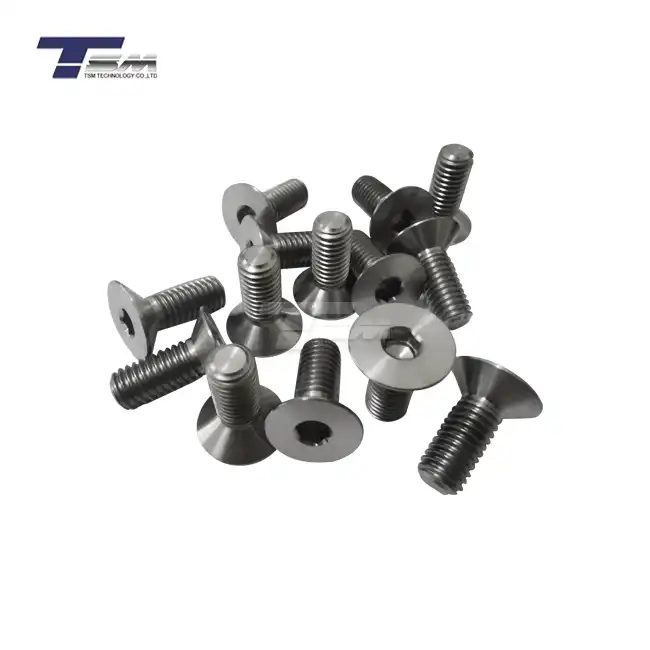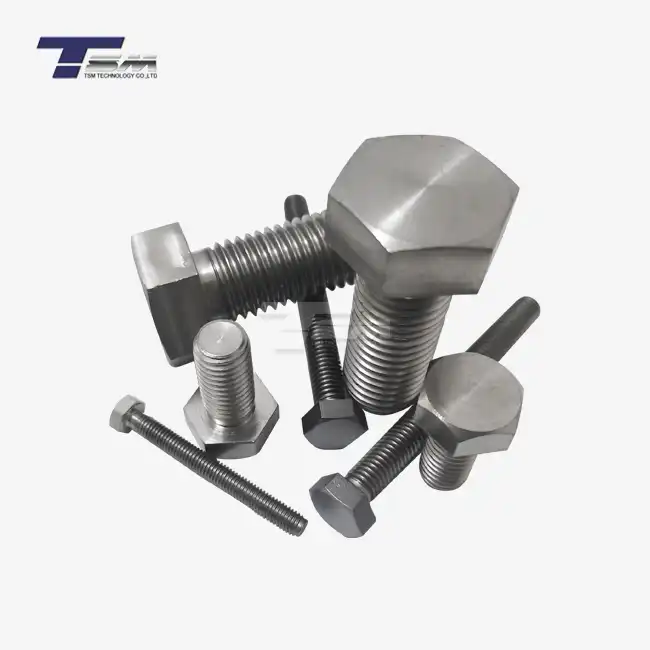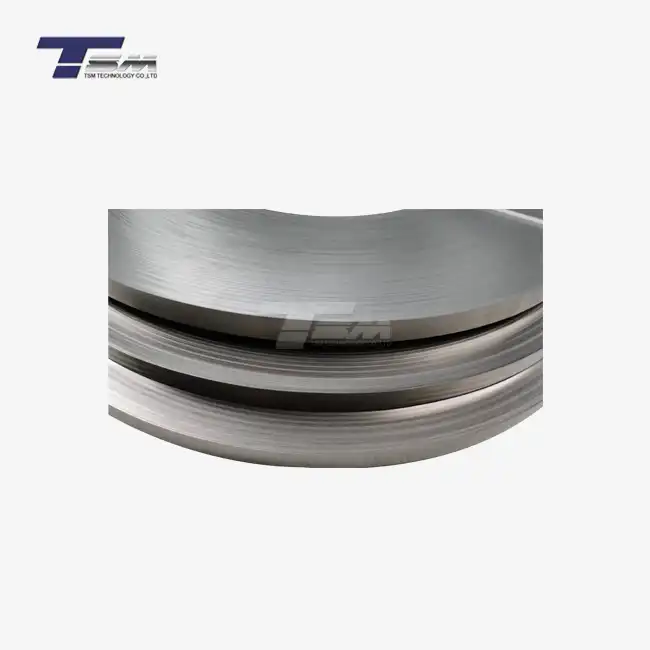The Fundamental Role of Chemical Composition in Hastelloy C276 Performance
Corrosion Resistance and Chemical Stability
Hastelloy C276 seamless pipes owe their exceptional corrosion resistance to their unique chemical makeup. The high nickel content, typically around 57%, forms the backbone of the alloy, providing inherent resistance to many corrosive media. Chromium, present at approximately 16%, contributes to the formation of a passive oxide layer that protects the material from further oxidation. Molybdenum, at about 16%, enhances resistance to pitting and crevice corrosion, particularly in chloride-containing environments.

The synergistic effect of these elements, along with smaller amounts of tungsten and other trace elements, creates a material that can withstand a wide range of aggressive chemicals, including hot chloride solutions, sulfuric and hydrochloric acids, and oxidizing agents. This chemical stability makes Hastelloy C276 tubing an ideal choice for applications in chemical processing, petrochemical industries, and pollution control equipment.
Mechanical Properties and Structural Integrity
The chemical composition of Hastelloy C276 tubes directly influences their mechanical properties. The balanced combination of elements contributes to the alloy's high strength, excellent ductility, and impressive work-hardening characteristics. The presence of molybdenum and tungsten enhances solid solution strengthening, improving the material's yield strength and tensile strength across a wide temperature range.
This unique composition allows Hastelloy C276 seamless pipes to maintain their structural integrity under extreme conditions, including high temperatures and pressures. The alloy's resistance to stress corrosion cracking and its ability to retain strength at elevated temperatures make it suitable for critical applications in heat exchangers, pressure vessels, and chemical reactors.
Weldability and Fabrication Considerations
The chemical composition of Hastelloy C276 also plays a crucial role in its weldability and fabrication characteristics. The carefully balanced elemental proportions contribute to the alloy's excellent weldability, allowing for the production of high-quality Hastelloy C276 tubing with consistent properties throughout the material. The low carbon content minimizes carbide precipitation during welding, reducing the risk of intergranular corrosion in heat-affected zones.
Understanding the chemical composition is essential for optimizing welding parameters and selecting appropriate filler materials. Proper consideration of the alloy's composition during fabrication ensures that the final Hastelloy C276 tubes maintain their intended properties and performance characteristics in demanding applications.
Impact of Elemental Variations on Hastelloy C276 Tube Properties
Nickel Content and Its Influence
The nickel content in Hastelloy C276 tubing serves as the primary element, typically ranging from 55% to 58%. This high nickel concentration is fundamental to the alloy's corrosion resistance and structural stability. Nickel's face-centered cubic crystal structure contributes to the material's excellent ductility and toughness, allowing Hastelloy C276 seamless pipes to withstand mechanical stress and thermal cycling without compromising integrity.
Variations in nickel content within the specified range can subtly affect the alloy's properties. A higher nickel percentage may enhance resistance to certain reducing acids, while a lower content might slightly increase strength at the expense of some ductility. Maintaining the optimal nickel balance is crucial for achieving the desired combination of corrosion resistance and mechanical properties in Hastelloy C276 tubes.
Chromium and Molybdenum Synergy
The interplay between chromium and molybdenum in Hastelloy C276 composition is a key factor in its exceptional corrosion resistance. Chromium, typically present at 15-17%, forms a passive chromium oxide layer that protects the underlying metal from further attack. Molybdenum, at 15-17%, works synergistically with chromium to enhance this passivation, particularly in reducing environments and in the presence of chlorides.
The precise balance of these elements in Hastelloy C276 tubing is critical. Slight variations can significantly impact the alloy's resistance to specific corrosive media. For instance, a higher molybdenum content may improve resistance to reducing environments, while a higher chromium content could enhance performance in oxidizing conditions. Understanding these relationships is essential for tailoring Hastelloy C276 seamless pipes to specific application requirements.
Trace Elements and Their Effects
While nickel, chromium, and molybdenum form the core of Hastelloy C276's composition, trace elements play subtle yet significant roles in fine-tuning the alloy's properties. Tungsten, typically present at 3-4.5%, contributes to solid solution strengthening and improves resistance to localized corrosion. Small amounts of manganese and vanadium can influence the alloy's hot workability and high-temperature strength.
The control of impurities, such as carbon, phosphorus, and sulfur, is equally important in Hastelloy C276 tubes. Minimizing these elements helps prevent carbide precipitation and maintain the alloy's corrosion resistance, particularly in welded sections. The precise management of these trace elements and impurities ensures that Hastelloy C276 tubing maintains its superior performance across various demanding applications.
Quality Control and Composition Verification in Hastelloy C276 Tube Manufacturing
Advanced Analytical Techniques
Ensuring the precise chemical composition of Hastelloy C276 tubes requires advanced analytical techniques. X-ray fluorescence (XRF) spectroscopy is commonly employed for rapid, non-destructive elemental analysis. This method allows manufacturers to verify the concentrations of major elements like nickel, chromium, and molybdenum in Hastelloy C276 seamless pipes with high accuracy.
For more detailed analysis, particularly of trace elements and impurities, inductively coupled plasma mass spectrometry (ICP-MS) is utilized. This highly sensitive technique can detect and quantify elements at extremely low concentrations, ensuring that the Hastelloy C276 tubing meets stringent compositional specifications. Optical emission spectroscopy (OES) is another valuable tool for comprehensive elemental analysis, providing a balance of speed and accuracy in composition verification.
Batch Testing and Certification
Quality control in Hastelloy C276 tube manufacturing involves rigorous batch testing protocols. Each production batch undergoes comprehensive chemical analysis to verify compliance with compositional standards. This process ensures consistency across production runs and helps maintain the high performance standards expected from Hastelloy C276 tubing.
Certification of chemical composition is a critical aspect of quality assurance. Manufacturers provide material test reports (MTRs) that detail the exact chemical composition of each batch of Hastelloy C276 seamless pipes. These certificates are essential for customers in industries with strict regulatory requirements, such as aerospace, chemical processing, and nuclear power generation. The MTRs serve as a guarantee of the material's authenticity and adherence to specified compositional ranges.
Continuous Improvement and Research
The pursuit of excellence in Hastelloy C276 tube manufacturing extends beyond mere compliance with existing standards. Ongoing research and development efforts focus on refining the alloy's composition to enhance specific properties or tailor the material for emerging applications. This continuous improvement process involves exploring slight modifications to elemental ratios and investigating the effects of novel trace additions.
Advanced computational modeling and simulation techniques are increasingly employed to predict how compositional variations might affect the performance of Hastelloy C276 tubing under different conditions. These tools allow manufacturers to optimize the alloy's composition for specific environmental challenges or mechanical requirements, pushing the boundaries of what's possible with nickel-based superalloys.
Conclusion
The chemical composition of Hastelloy C276 tubes is a critical factor that underpins their exceptional performance in challenging environments. The precise balance of nickel, chromium, molybdenum, and other elements creates a synergistic effect that results in superior corrosion resistance, mechanical strength, and durability. Understanding and controlling this composition is essential for maintaining the high standards expected from Hastelloy C276 tubing across various industrial applications. As technology advances and industrial demands evolve, the ongoing refinement of Hastelloy C276's composition will continue to drive innovations in material science, ensuring that this remarkable alloy remains at the forefront of high-performance materials for years to come.
Contact Us
For more information about our high-quality Hastelloy C276 tubes and seamless pipes, or to discuss your specific material needs, please don't hesitate to contact us at info@tsmnialloy.com. TSM TECHNOLOGY is committed to providing superior alloy solutions tailored to your unique requirements.



_1739071581132.webp)